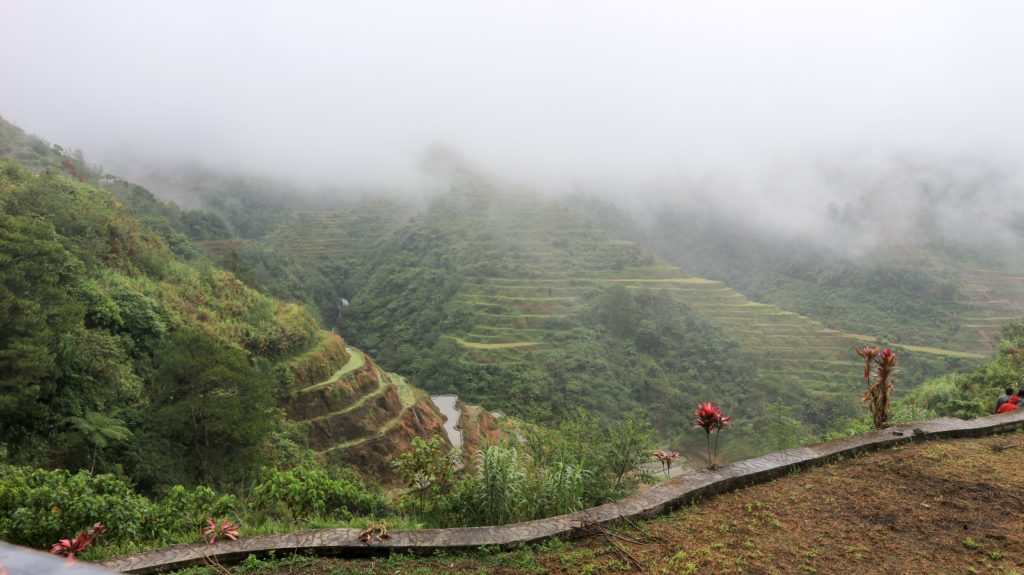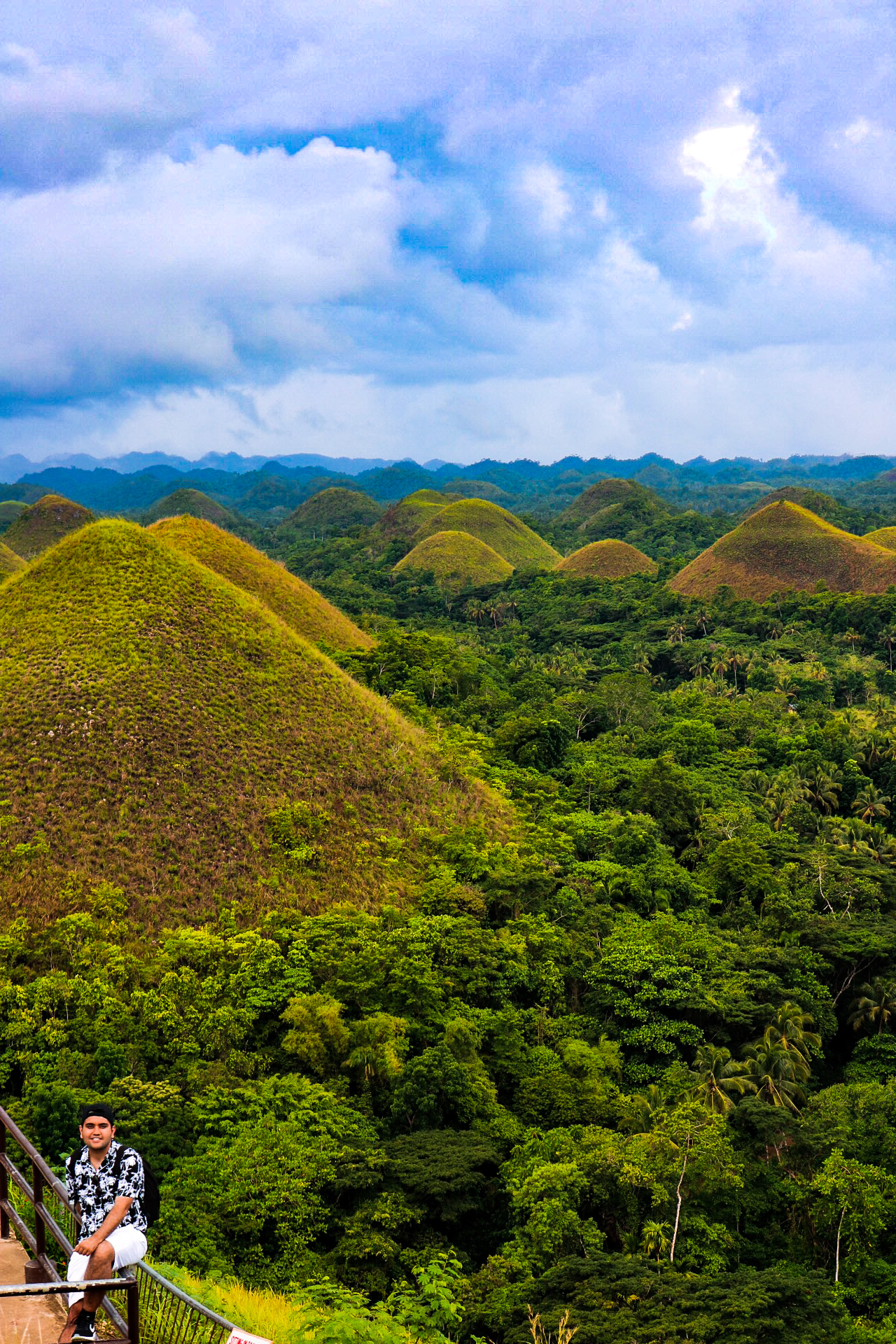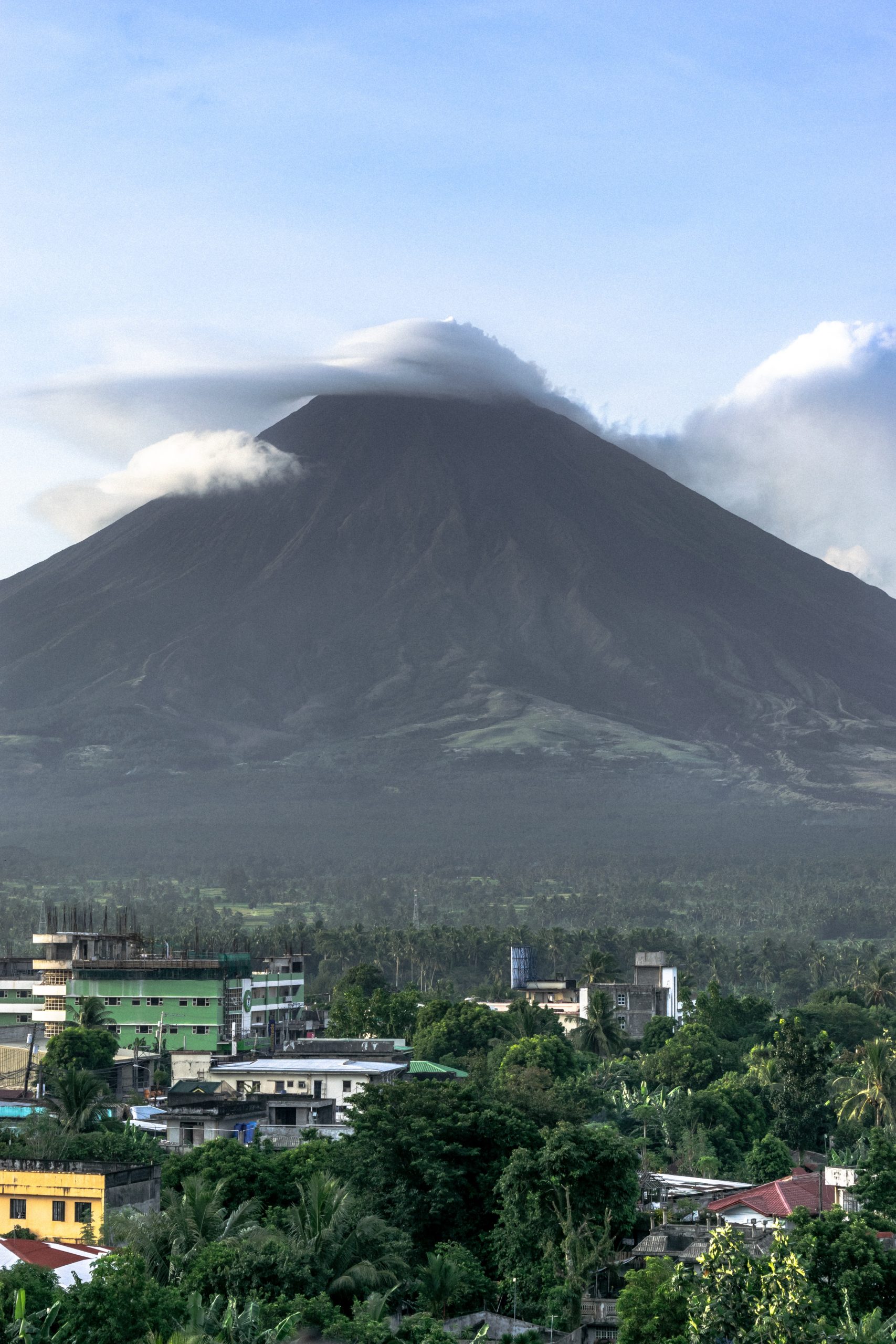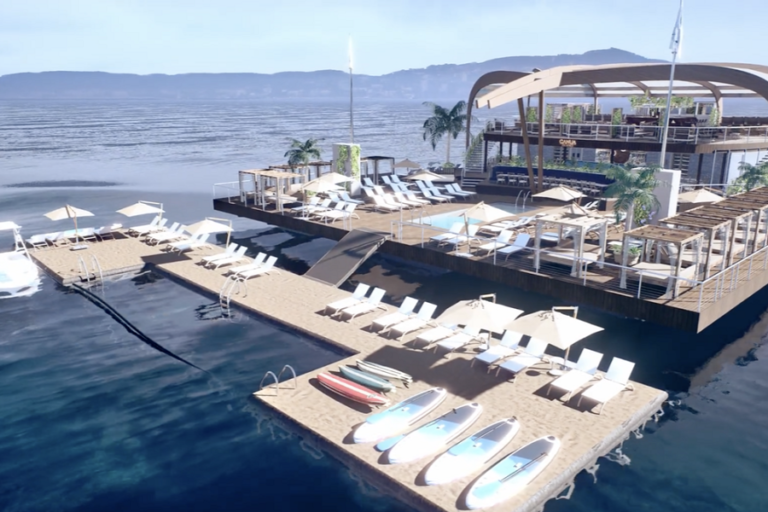Must-visit Landmarks to See in The Philippines
The Philippines is a beautiful country with a rich history, diverse culture, and historical sites. There are numerous must-visit historic landmarks across the archipelago. Here are some of the must-visit landmarks to see in the Philippines:
Banaue Rice Terraces
Often referred to as the “Eighth Wonder of the World,” these terraced rice paddies are carved into the mountains of Ifugao Province. They showcase centuries-old engineering and agricultural ingenuity.

The Banaue Rice Terraces, often referred to as the “Eighth Wonder of the World,” are an awe-inspiring and ancient agricultural wonder located in the northern part of the Philippines, specifically in the province of Ifugao on the island of Luzon. These terraces are an exceptional testament to the engineering and farming skills of the indigenous people of the Philippines.
Here are some key details and features of the Banaue Rice Terraces:
- Cultural Heritage: The Banaue Rice Terraces are believed to be over 2,000 years old, and they were carved into the mountainsides by the Ifugao people using simple tools. The terraces are an embodiment of sustainable and organic farming practices that have been passed down through generations.
- Stunning Landscape: The terraces cover an expansive area and stretch over 10,000 square kilometres of mountainside. The landscape is characterized by stepped, rice-terraced paddies that follow the contours of the mountains. During the planting season, these terraces are lush green, creating a visually stunning landscape. The contrast of the green rice paddies against the surrounding mountains is breathtaking.
- UNESCO World Heritage Site: In recognition of their cultural and historical significance, the Banaue Rice Terraces were designated as a UNESCO World Heritage Site in 1995. This recognition has helped in the preservation and protection of this remarkable heritage site.
- Irrigation System: What’s particularly impressive about these terraces is the intricate irrigation system that the Ifugao people developed. They used a system of stone walls and canals to direct water from the forests above down to the terraces. This system allows for the cultivation of rice even at high altitudes, and it’s still in use today.
- Cultural Significance: The Banaue Rice Terraces are not just a marvel of agricultural engineering; they also hold deep cultural significance for the Ifugao people. The terraces are considered sacred, and they are an integral part of the Ifugao’s traditional practices and beliefs.
- Tourism: Banaue and the surrounding areas have become a popular tourist destinations, attracting visitors from around the world who come to admire the terraces and learn about the unique culture of the Ifugao people. You can explore the terraces on foot, and there are also trekking opportunities in the region.
- Challenges: While the terraces are a remarkable achievement, they face various challenges today, including erosion, lack of maintenance, and migration of younger generations to urban areas. Efforts are being made to address these challenges and preserve this cultural and agricultural treasure.
Visiting the Banaue Rice Terraces provides not only a visual feast but also an opportunity to learn about the rich cultural heritage and agricultural practices of the Ifugao people. It’s a place where the past and present intertwine, offering a glimpse into the enduring traditions of the Philippines.
Chocolate Hills
Located in Bohol, these unique geological formations consist of over a thousand conical hills that turn brown during the dry season, resembling chocolate mounds.

The Chocolate Hills are a geological wonder and one of the most iconic natural landmarks in the Philippines. They are located in the province of Bohol, which is part of the Central Visayas region in the Visayas island group. I personally did a day trip to the chocolate hills from Cebu City, but the island is fairly big with plenty of other activities to do there. The Chocolate Hills are known for their unique and conical hill formations that dot the landscape, creating a stunning and otherworldly vista.
Here are some key facts and features of the Chocolate Hills:
- Formation and Appearance: The Chocolate Hills consist of around 1,268 perfectly cone-shaped hills that cover an area of about 50 square kilometres (20 square miles). During the dry season, the green grass covering these hills turns brown, giving them their name “Chocolate Hills” because they resemble mounds of chocolate drops.
- Geological Mystery: The exact origin of the Chocolate Hills’ formation is still debated among geologists. One prevailing theory is that they are the result of the uplift of coral deposits and their subsequent erosion by water and natural forces over millions of years.
- Landscape Viewing Points: One of the best places to view the Chocolate Hills is from the Chocolate Hills Complex in Carmen, Bohol. There’s an elevated viewpoint that offers a panoramic view of the hills, providing an excellent opportunity for photography and taking in the breathtaking scenery.
- Chocolate Hills Adventure Park: Located nearby, the Chocolate Hills Adventure Park offers adventure activities like zip-lining, bike ziplines, and a rope course, all with a stunning view of the Chocolate Hills.
- Conservation and Protection: The Chocolate Hills are considered a National Geological Monument and have been declared the country’s third National Geological Monument together with Taal Volcano and the Hundred Islands. Efforts are made to protect and preserve the area’s natural beauty.
- Tourism: The Chocolate Hills are a popular tourist attraction in Bohol and draw visitors from both within the Philippines and abroad. Many tourists are captivated by the unique landscape and enjoy exploring the surrounding area.
- Legend of Arogo: According to local folklore, the Chocolate Hills were formed by the tears of a giant named Arogo, who was in love with a mortal woman. When she died, Arogo wept and his tears formed the hills.
- Bohol Tourism: Beyond the Chocolate Hills, Bohol has other attractions to offer, including the Tarsier Conservation Area (home to the world’s smallest primate, the Philippine tarsier), the historic Baclayon Church, the man-made forest, and the stunning white-sand beaches of Panglao Island.
Visiting the Chocolate Hills provides a unique opportunity to marvel at nature’s wonders and experience a landscape that is unlike any other. The blend of geological mystery, stunning vistas, and local legend make the Chocolate Hills a must-see destination for travellers exploring the Philippines.
Coron’s Rock Formations and Lakes
Coron, located in Palawan, is famous for its stunning rock formations, clear lakes, and vibrant underwater life, making it the best place for divers and nature enthusiasts.
Coron, located in the Palawan province of the Philippines, is known for its breathtaking natural beauty, including stunning rock formations and enchanting lakes. These geological features make Coron a popular destination for nature enthusiasts and travellers seeking to explore unique landscapes. Here’s an overview of Coron’s rock formations and lakes:
Rock Formations:
- Karst Limestone Landscape: Coron is characterized by its dramatic karst limestone formations, which have been sculpted by nature over millions of years. These towering limestone cliffs, often covered with lush vegetation, create a surreal and otherworldly atmosphere. You usually pay a fee to get on a boat ride to visit these limestone formations.
- Kayangan Lake Viewpoint: One of the most iconic spots in Coron is the Kayangan Lake Viewpoint. The viewpoint offers a stunning panoramic vista of turquoise waters surrounded by towering limestone cliffs. This viewpoint is frequently photographed and is a must-visit for any visitor to Coron.
- Twin Lagoon: The Twin Lagoon is another captivating site. It’s characterized by two lagoons—one hidden behind a limestone wall and accessible through a small opening, and the other visible from the surface. During low tide, you can swim or kayak through the passage that connects the two lagoons, and during high tide, you can climb a ladder to access the hidden lagoon.
- Siete Pecados: This area comprises seven small limestone islets that offer excellent snorkelling and diving opportunities. The crystal-clear waters around these islets are teeming with marine life and coral formations.
Lakes:
- Kayangan Lake: Often dubbed the “cleanest lake in the Philippines,” Kayangan Lake is nestled amidst towering limestone cliffs. Its emerald-green waters are renowned for their clarity and are perfect for swimming and snorkelling. The lake is surrounded by lush vegetation, adding to its serene ambience.
- Barracuda Lake: This unique lake is known for its distinct thermocline, which creates a layer of cooler water near the surface and warmer water below. The lake is named after the barracuda fish that inhabit its depths. The water’s high mineral content gives it a slightly brackish taste.
- Twin Lagoon: As mentioned earlier, the Twin Lagoon features not only stunning rock formations but also two connected lagoons. The interaction between saltwater and freshwater creates an interesting blend of temperatures.
- Maquinit Hot Spring: While not a lake, the Maquinit Hot Spring is a noteworthy natural attraction in Coron. It’s a saltwater hot spring nestled amid lush surroundings. Soaking in the warm waters can be particularly soothing, especially after a day of exploring.
Coron’s rock formations and lakes are an integral part of its allure, offering visitors the chance to immerse themselves in a unique and mesmerizing environment. Whether you’re exploring the turquoise lakes or gazing up at the towering limestone cliffs, Coron’s natural wonders are sure to leave a lasting impression. El Nido is another beautiful island which also features island hopping boat tours to visit beaches with its crystal clear waters, lakes and lagoons; you’ll have the best time here.

Man-made Forest in Bohol
A picturesque stretch of densely planted mahogany trees, creating a captivating and unique drive-through experience.

The Man-made Forest in Bohol is a striking and unique attraction located along the highway between the towns of Bilar and Loboc. This forested area is characterized by a dense canopy of towering mahogany trees that create a picturesque and surreal environment. Here’s more information about the Man-made Forest:
Origin and Purpose:
The Man-made Forest was established in the late 20th century as an ambitious reforestation project. The area was originally cleared due to deforestation, and in the 1960s, the local government and community decided to replant the area with mahogany trees (Mahogany integrifolia) to restore the landscape and address soil erosion issues. The result is the dense and visually striking forest that exists today.
Key Features:
- Mahogany Trees: The dominant feature of the Man-made Forest is the tall and straight mahogany trees that line both sides of the road. These trees have grown closely together, creating a canopy that provides shade to travellers passing through the area.
- Canopy and Atmosphere: As you drive through the forest, you’ll experience a distinct change in the environment. The towering trees create a tunnel-like effect, with sunlight filtering through the leaves and creating patterns of light and shadow on the road.
- Cooling Effect: The dense canopy of the Man-made Forest has a noticeable cooling effect on the surrounding area. The temperature can be significantly lower within the forest compared to the open areas on either side of the road.
- Photography and Scenic Views: The Man-made Forest is a popular spot for tourists and photographers. The symmetry of the trees and the natural lighting makes it an ideal place for capturing striking images.
Location and Accessibility:
The Man-made Forest is located along the main highway that connects the towns of Bilar and Loboc in Bohol. It’s easily accessible by road and is often a stop for tourists travelling between popular attractions in Bohol, such as the Chocolate Hills and the Tarsier Conservation Area.
Conservation and Tourism:
While the Man-made Forest has become a popular tourist attraction, it’s important to note that the original goal was to restore the ecosystem and combat deforestation. The area serves as an example of the positive impact of reforestation efforts. The mahogany trees, while not native to the Philippines, have adapted well to the environment.
Visiting the Man-made Forest is a unique experience that offers a refreshing break from the tropical heat, a chance to appreciate the efforts of reforestation, and an opportunity to capture stunning photos amid a symphony of towering trees.
Mayon Volcano
Known for its perfect cone shape, mount Mayon is one of the most iconic volcanoes in the Philippines. It’s located in Albay Province and offers stunning views.

Mayon Volcano is one of the most iconic and active volcanoes in the Philippines. It is renowned for its near-perfect cone shape and its frequent eruptive activity. Located in the province of Albay in the Bicol Region of Luzon, Mayon is not only a geological marvel but also a significant part of the cultural and natural heritage of the Philippines. The last volcanic eruption was back in 2018, and has more than 30 eruptions since 1616.
Key Features and Information about Mayon Volcano:
- Perfect Cone Shape: Mayon’s most distinctive feature is its symmetrical cone shape. It rises prominently from the surrounding landscape, reaching an elevation of approximately 2,462 meters (8,077 feet) above sea level.
- Active Volcano: Mayon is considered one of the most active volcanoes in the Philippines and is part of the Pacific Ring of Fire, an area characterized by a high degree of tectonic and volcanic activity. Throughout its history, Mayon has exhibited a pattern of both minor and major eruptions.
- Eruptive History: Mayon has a long history of eruptions, some of which have been particularly devastating. Notable eruptions occurred in 1814, when the entire town of Cagsawa was buried, and in 1993, when pyroclastic flows caused significant destruction. Despite its activity, Mayon’s volcanic ash is also known to contribute to the fertility of the surrounding soil.
- Volcanic Hazards and Safety: Due to Mayon’s frequent eruptions, there are established danger zones around the volcano. Local authorities closely monitor its activity and issue advisories or evacuation orders when necessary to ensure the safety of nearby communities.
- Tourism and Adventure: Despite its active nature, Mayon Volcano is a popular tourist destination. Visitors can take guided treks to certain safe areas on the volcano, allowing them to get closer to its natural beauty and unique landscape. However, these treks are conducted under the guidance of trained professionals and are subject to safety regulations.
- Cultural Significance: Mayon is deeply intertwined with the culture and history of the Bicol Region. It has inspired various myths and legends among the local population, contributing to its mystique. It’s also a symbol of resilience and endurance for the people living in its vicinity.
- Mayon Volcano Natural Park: In recognition of its natural and cultural significance, Mayon Volcano and its surrounding areas have been designated as a protected area known as the Mayon Volcano Natural Park with diverse habitats to explore.
- Scenic Beauty: The volcano’s majestic beauty has made it a frequent subject of photographs, paintings, and other forms of art. The contrast between its lush slopes and the greyish ash deposits from previous eruptions creates a striking visual appeal.
When visiting Mayon Volcano or its surroundings, it’s important to heed the advice and warnings of local authorities. Its active nature adds both fascination and a certain level of caution to the experience. The volcano’s picturesque silhouette against the horizon is a testament to the forces that shape our planet and a reminder of the delicate balance between nature and human habitation.
Below is a list of other historic sites to also visit if you are planning on visiting the Philippines.
- Intramuros: This historical district in Manila is the oldest district and the original core of the city. It’s home to old Spanish colonial buildings, churches, and fortifications, showcasing the Philippines’ colonial past, including the Spanish rule, a historic event until the Spanish colonial period ended in 1898.
- Taal Volcano and Taal Lake: Taal Volcano is located on an island within a lake. The view from Tagaytay Ridge overlooking the lake and volcano is breathtaking.
- Puerto Princesa Subterranean River National Park: A UNESCO World Heritage Site, this park features an underground river that winds through limestone karst landscapes and is home to diverse flora and fauna.
- Paoay Church: Also known as the San Agustin Church, this Baroque-style church in Paoay, Ilocos Norte, is a UNESCO World Heritage Site and a prime example of Philippine colonial architecture. This is the oldest stone church in the Philippines. The church was also spared during the Spanish–American War, as well as the Japanese invasion and the Battle of Manila, so the oldest church has withstood many significant events.
- Rizal Park: Located in Manila, this park is dedicated to the country’s national hero, Jose Rizal. It features monuments, gardens, and a museum.
- Hundred Islands: This group of islands and islets in Pangasinan offers beautiful landscapes, beaches, and opportunities for island hopping and water activities.
- Mount Apo: The highest peak in the Philippines, located in Mindanao, offers challenging trekking experiences and breathtaking panoramic views.
- Fort Santiago: Situated within Intramuros, this historical fortress played a significant role during the Spanish colonization and offers insights into the country’s past.
- Calle Crisologo: Found in Vigan, Ilocos Sur, this cobblestone street is lined with well-preserved Spanish colonial houses, giving visitors a glimpse of the Philippines’ colonial heritage.
- Cebu’s Magellan’s Cross and Basilica Minore del Santo Niño: These landmarks are part of Cebu’s rich cultural and religious history, marking the arrival of Christianity to the Philippines.
Remember that the Philippines has countless other beautiful places to explore, making it one of my favourite countries to visit in Southeast Asia. Be sure to respect local customs and traditions while visiting these landmarks, and make the most of your travel experience before these landmarks become the most visited tourist attractions for travellers!
If you enjoyed reading this blog on, then please feel free to read my other blogs at https://www.mymemoriesabroad.com/category/blog/ or head to my Pinterest profile to have a look at travel photos which will hopefully inspire you to book your holiday to remember at https://www.pinterest.co.uk/mymemoriesabroad/.

